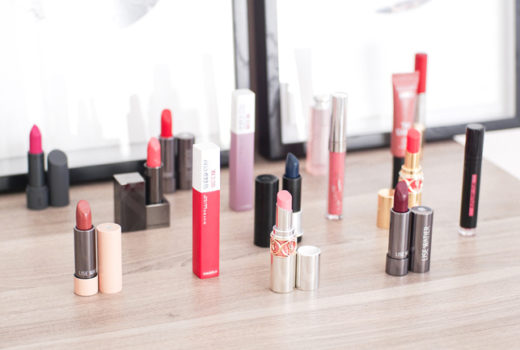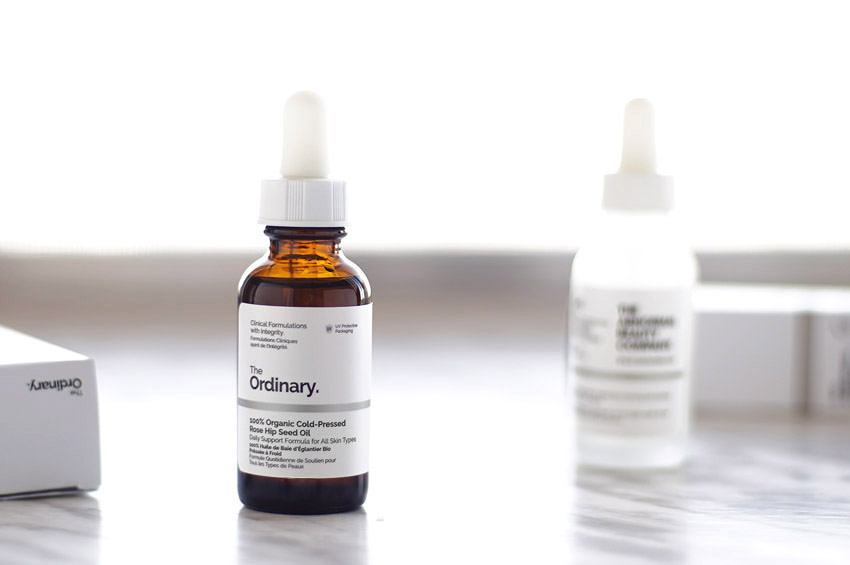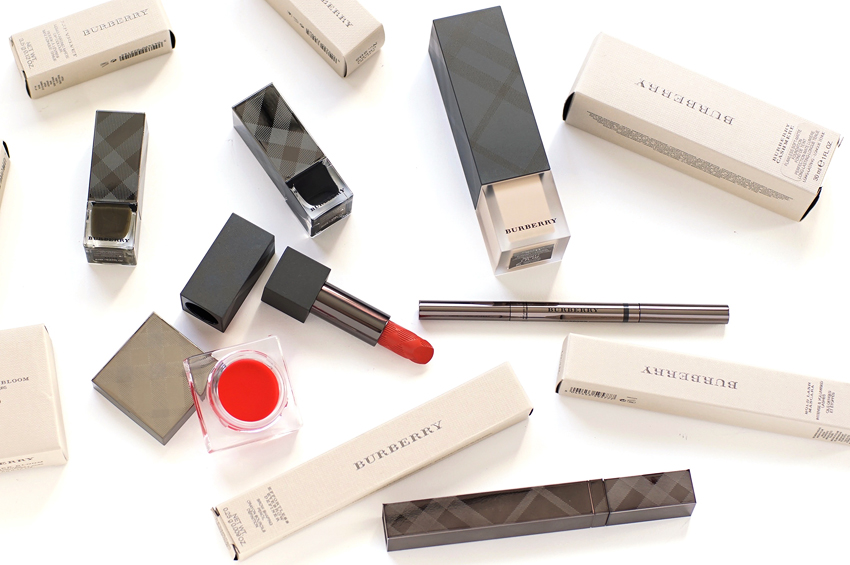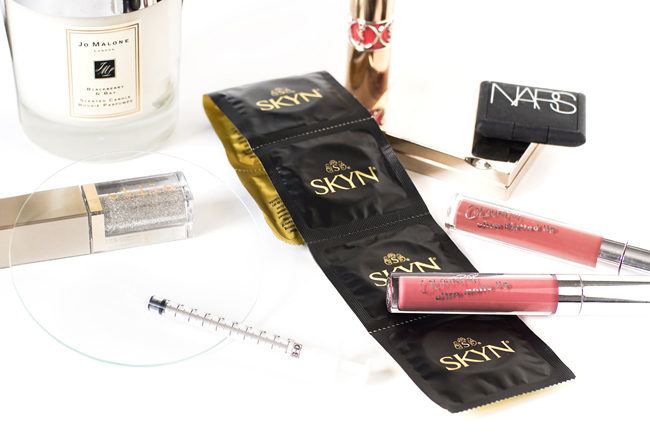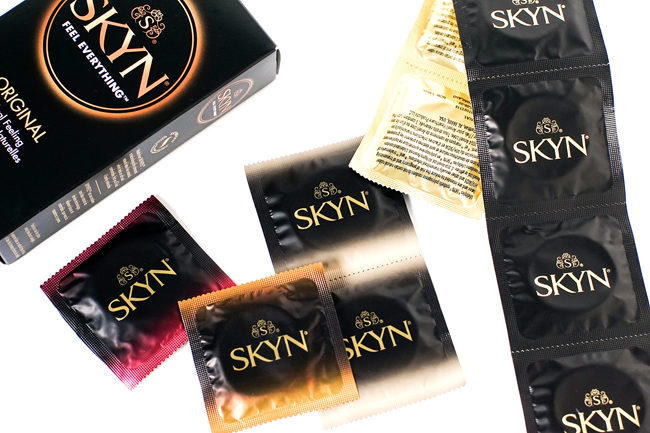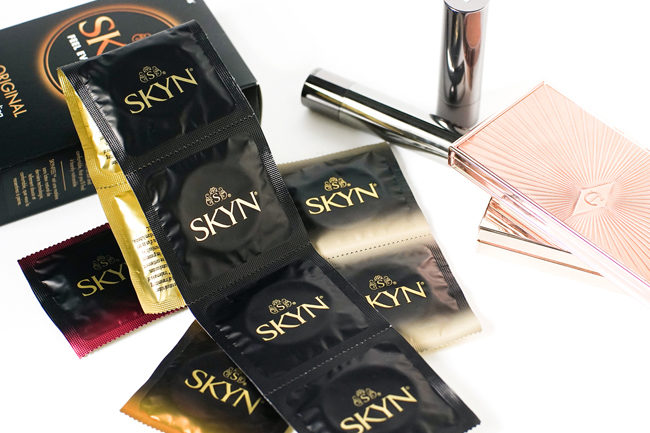It’s the start of a new year, and Valentine’s Day is creeping up on us again — so what better a time for a post on how to talk about safe sex? Whether you have one partner, no partners, or many partners, safe sex is vital. theNotice has a sex category specifically because I’m passionate about the idea that everyone is entitled to a healthy sex life, and “health” plays a big part in that.
I’ve talked about safe solo sex a lot, but let’s start this post by condensing that information.
*sponsored post
How to have safe solo sex
I know: safe sex isn’t really something that you think about when you’re having it by yourself. But if you’re using toys to masturbate, it’s essential that you’re cleaning, choosing, and using them correctly. Any post on how to talk about safe sex needs to talk about solo sex.
theNotice only features reviews of body-safe toys. These are products that are made from non-porous materials, like silicone and ABS toys. (I tend to prioritize waterproof toys, and have yet to review anything made from glass or stainless steel.) Nothing featured on theNotice is made from Sil-A-Gel, jelly, or rubber, which can leak phthalates into your body and commonly cause bacterial vaginosis, yeast infections, or dermatitis.
With every toy, it’s recommended that you wash at three stages: coming out of the box, before use, and after use. (Realistically, I sanitize out of the box, wash after every use, and store in a clean area.) Make sure to use soap when you wash, and sanitize between partners. This can be done with a 10% bleach solution, an antibacterial soap or toy cleaner, or boiling water.
Finally, give your body a break by using lube, which you can read more about it in my Introduction to Lube. Add a bit of body-safe lubricant to reduce friction, and always use lube during anal play.
STDs can be transmitted during oral sex, too! These coloured guys are flavoured but sugar-free.
How to talk about safe sex with your partner(s)
So you and your partner are ready to have sex. Congratulations! Before anything happens, it’s time to talk about using protection.
The most common form of protection used during sex is the male condom, which I’m sure hopeful that you learned about in health class. What your awkward gym teacher probably didn’t tell you, however, is that fit is really important. A condom that’s too big is prone to slipping off during sex, and a condom that’s too tight will be hard to put on properly. I really like the original Skyn condoms. They’re latex-free, and I’m frequently told that they’re one of the most comfortable brands. Skyns are easier to find than the popular Kimono MicroThins, and often cheaper. I always bring a strip of Skyns and a bottle of Sliquid H2O with me on dates just in case!
» Stock up on Skyns, Kimonos, female condoms, and dental dams at Come As You Are (CA), Well.ca, and drugstores like Walgreens (US).
It can be awkward to have “the talk” before intercourse, but in it’s essential — even just for oral sex, which commonly passes HPV and herpes (among other STDs). I like to broach the topic by discussing our last test results, and what I expect from them in terms of condom usage. I’m not always in a relationship with my partners, but I always have a relationship with them — for me, a big part of keeping myself safe is feeling comfortable with my level of knowledge of a person before heading to the bedroom. (Or the living room, or the kitchen, or the open side of the converted VW bus, as it were.)
 Date night essentials: a great lip (the Colourpop Ultra Mattes don’t budge), a sexy candle, and an up-to-date STD test.
Date night essentials: a great lip (the Colourpop Ultra Mattes don’t budge), a sexy candle, and an up-to-date STD test.
When to get tested
Getting tested for STDs can be tricky, because it takes 24 hours to 3 months for body to develop antibodies. Plus, you can come into contact with different versions of the same sexually transmitted disease (like an oral, genital, or antibiotic-resistant version).
To keep you and your partner(s) as safe as possible, I encourage thorough, frequent testing unless you’re in a long-term situation with no new partners. I’m lucky enough to live in Canada, where all STD testing is covered by provincial healthcare. (EDIT: Amanda has noted that HPV testing may not be included in this coverage, depending on your province of residence.) Tests can be ordered by any doctor, and in many cities (mine included), there are free STD clinics that take anonymous, walk-in appointments.
In the US, however, sexual healthcare is a little different. Testing is significantly more expensive, and the American healthcare system doesn’t have universal coverage for diagnostics. Clinics like Planned Parenthood offer free STD testing, but they’re not always a safe or accessible choice. That’s where services like STDcheck.com come in. I’ve been planning this post since last fall (it’s a follow-up to this one), and they offered to sponsor my final product. The site matches you directly to a clinic in your area (within the continental US) for an STD panel, and emails you your results in 1-2 days. You can choose which tests to take, as a 10 test panel may not always be necessary.
Finally, STDcheck.com is great because they offer some early detection tests. If you’re at risk for a particular STD, you can check their site to make sure you’re ready for testing.
How the sex talk changes with more than one partner
I’ve spent parts of my life casually dating, polyamorously dating, or open dating. If you’re having any form of non-monogamous sex or group sex, the problem of how to talk about safe sex gets a little more complicated.
For starters, you’re going to have to have “the talk” multiple times, and think in a broader scope. How does the risk of pregnancy affect each person, and is everyone comfortable with their risk factors? The same thing applies for STD testing: you may find that you want to be tested more frequently if you or your partner has other partners. It’s healthy to discuss testing throughout the entire group if you’re having sex with more than one partner, because one person’s decision to have risky sex affects everyone.
Even if you’re just casually dating, it’s your responsibility to make sure your partners understand their risk factor. Who’s “fluid bonded” (having unprotected sex) with who? Are there safety expectations that you expect your partners and their partners to uphold? What’s the protocol for letting everyone know if someone breaches those expectations? Having safe sex doesn’t exclude you from having casual sex, it just means that you need to sacrifice a couple minutes of your date night to talk things out first.
As part of a longer discussion, I also like to talk to my partners about their opinions on abortion. My personal rule is simple: I choose to be childless at this point in my life, so I won’t get involved with anyone for whom that’s an issue for. As a uterus owner, I have the final say on my body, but I don’t expect to have the final say on anyone else’s.
When to have the talk
Talking about safe sex has a place in every sexual relationship. I have “the talk” on any date that I think might end in sex, and have it again throughout the relationship. As your expectations of your partner(s) change, talking about safe sex can create a safe space to discuss your relationship on the whole. It allows for a dialogue to state clearly what you expect, and where you feel the boundaries of your relationship lie. Think of the safe sex talk as an easy way to stop your life from becoming a bad rom-com. If you’re open and honest with your partners, no one gets left crying at the airport — and you can skip the middle 90 minutes of the movie where person A is miserable because they misunderstood person B’s offhand remark.
(You can really tell that I love rom-coms, eh?)
(But for real, I LOVE a good rom-com. I just hate the trope-y ones!)
If you haven’t gotten tested in a while, consider today the perfect day to get back into the game with STDcheck.com.



